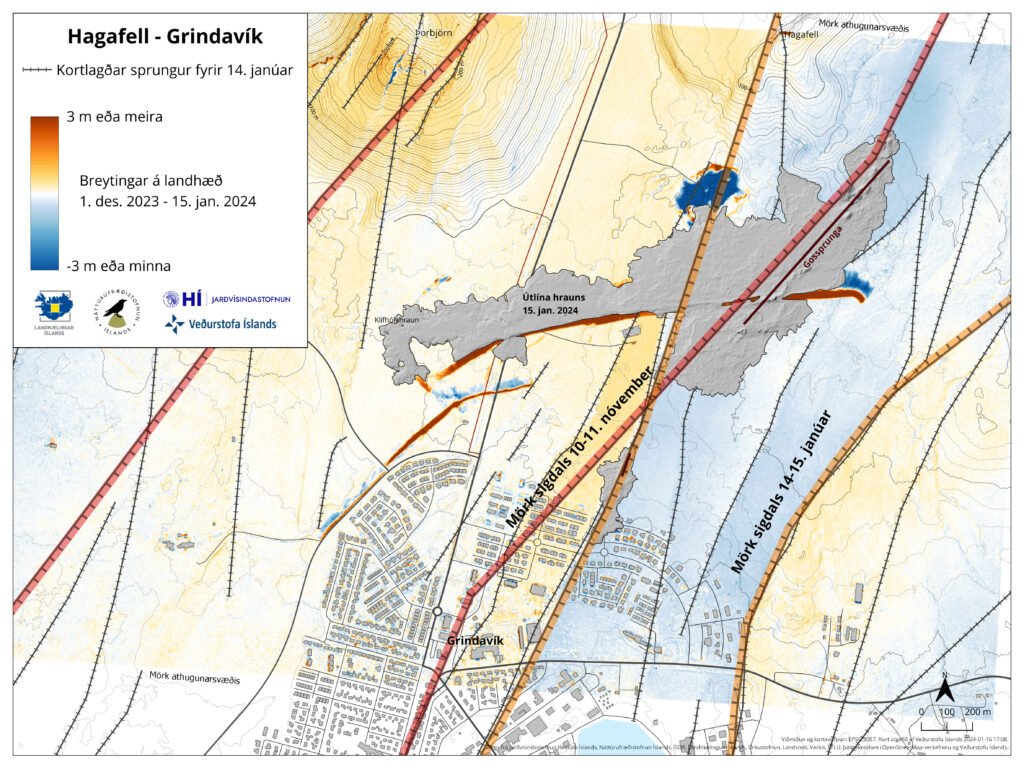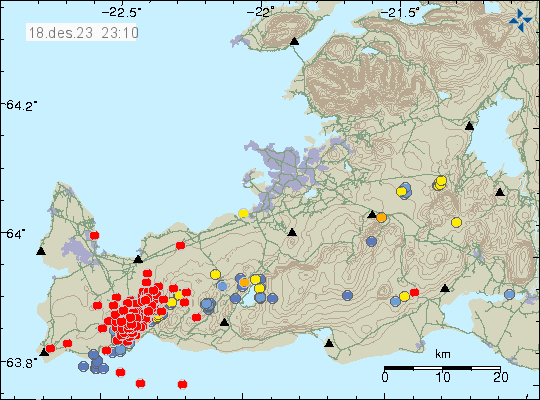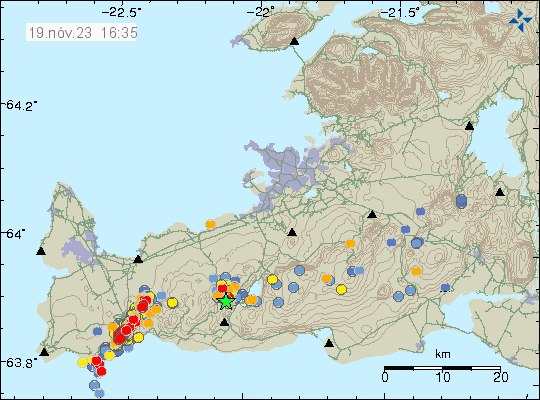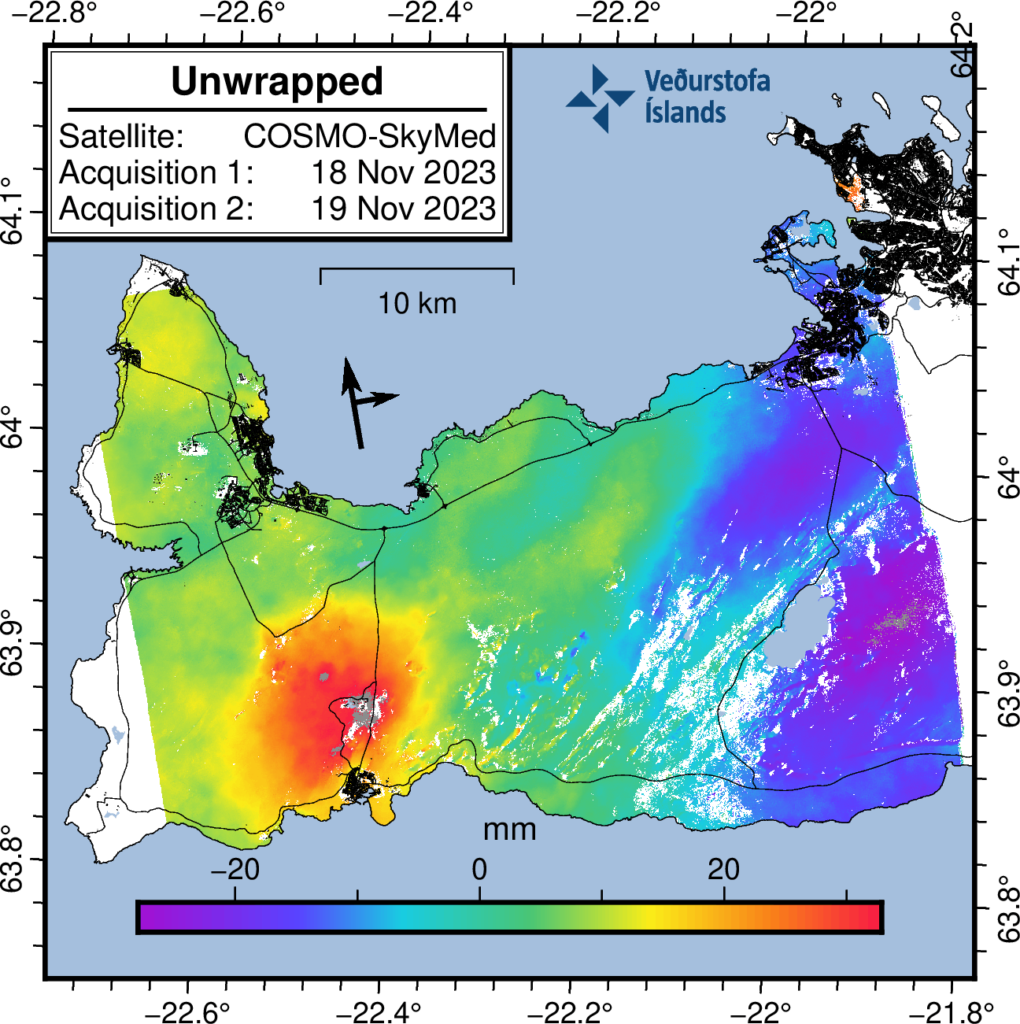This is a short update because I don’t expect a lot to happen in this eruption.
Here are the main details as they are known on 17. March 2024 at 18:28 UTC. This is the best information I have at current time.
- The eruption has gotten smaller since it started yesterday (16. March 2024 at 20:23 UTC). The fissure is now only erupting in three to four locations.
- The lava field did reach the barriers that are protecting Grindavík town.
- This eruption is not slowing down as quickly as earlier eruptions.
- Harmonic tremor is mostly consistent but is lower than yesterday when the eruption started.
- The eruption fissure seems to be around 800 meters to 1 km long.
- There’s a ongoing risk of new fissures opening.
- Lava flow seems to have slowed down, but that might because it might be collecting in large lava ponds that break and then the lava rushes forward at great speed.
- Suðurstrandarvegur is at risk of getting buried by a lava flow. If that happens, the risk of the lava reaching the ocean increases, since from the road the distance is only around 500 meters.
- There’s no signs of this eruption ending on the web cameras.
- Craters have started forming in the active parts of the fissure.
If anything more happens I’ll post update soon as I can. Normally, an eruption from Svartsengi volcano only last around 1 day. If this eruption goes longer, then next update should be tomorrow or sooner if anything important happens.





